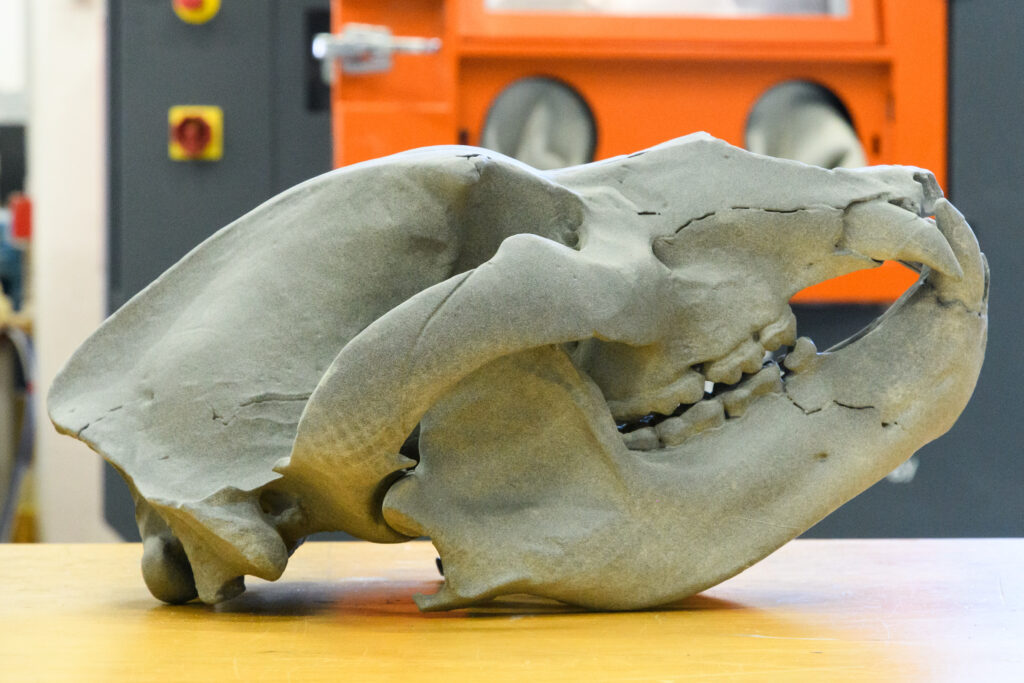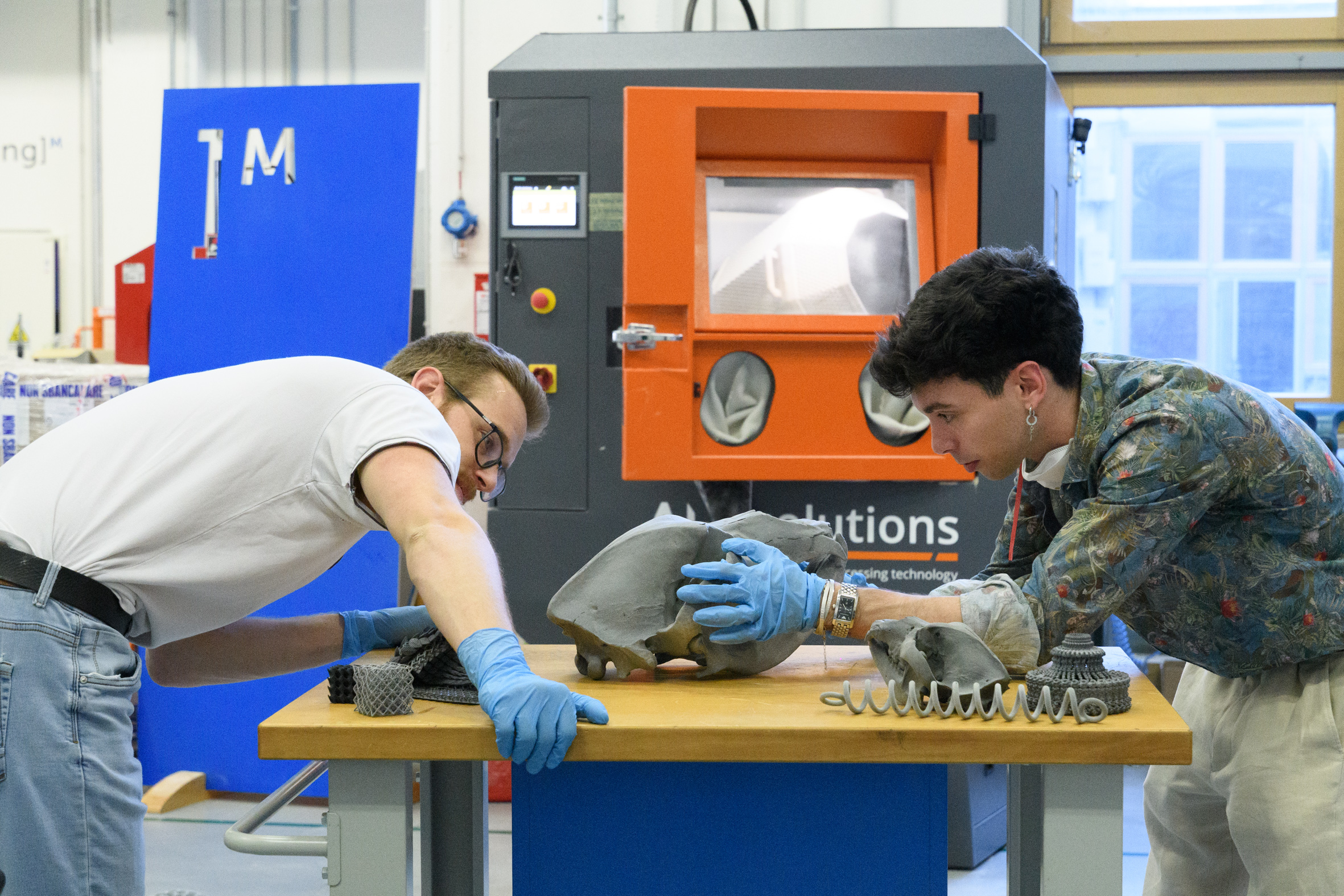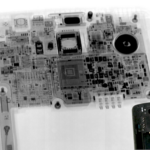Advanced technology at the service of science
“In order to reproduce the skull,” says ProM Facility engineer Gianluca Berti, “we performed two types of analysis: firstly, an external surface scan and, secondly, a tomography of the skull, a procedure similar to a CT scan”. This made it possible to analyse in great detail not only the exterior of the fossil, but also its interior. In fact, the vessels of the skull and the nasal and dental cavities were examined and faithfully reproduced. The skull was then 3D printed in Polyamide (Nylon), a material renowned for being particularly easy to handle.
A project aimed at inclusion
The desire to create a truly accessible museum experience stemmed from a personal reflection of the young designer:
“As a child, when I entered a museum, I would be immediately told not to touch anything,” Andrea Sartori recalls. “As I grew up, I began to wonder how blind and visually impaired people could enjoy that experience”.
Together with the Abilnova cooperative, Sartori analyzed the architectural and perceptual barriers that a person with a disability may face when entering a museum and, in addition to the reproduction of the cave bear skull, in his thesis he designed an innovative and economically accessible display to improve their visiting experience.
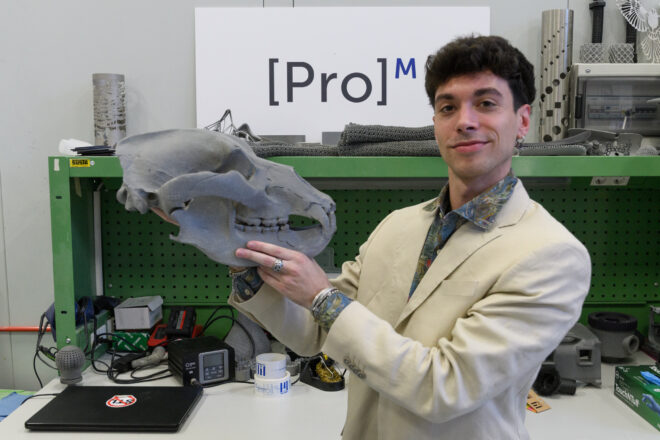
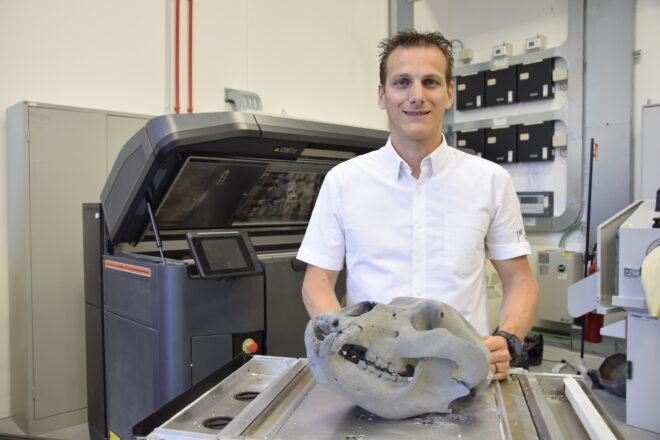
The information totem imagined by Sartori is called ‘Homeros’, named after the great blind father of classical epic storytelling, and rotates on itself to avoid the person having to move. Even its heights are calculated with special attention to wheelchair users. Inside the display are the prototyped object, which can be handled by visitors, as well as:
- drawers with files in Braille;
- tablets with content in LIS (Italian sign language);
- RFID systems to transmit audioguides directly to mobile phones;
- tactile samples (such as fur and tree bark);
- perfumers to stimulate olfactory memory;
- a perforated base that interacts with the surrounding space through a laser choreography.
Finally, the lower part of the totem is perforated to allow a choreography of lasers to make it interact with the surrounding space.
The idea, in fact, is to put people with disabilities at the centre and alongside other visitors and to guarantee everybody the most complete and integrated visitor experience possible.
A replicable model for museums
The idea is to put people with disabilities at the centre and alongside other visitors and to guarantee everybody the most complete and integrated museum experience possible.
